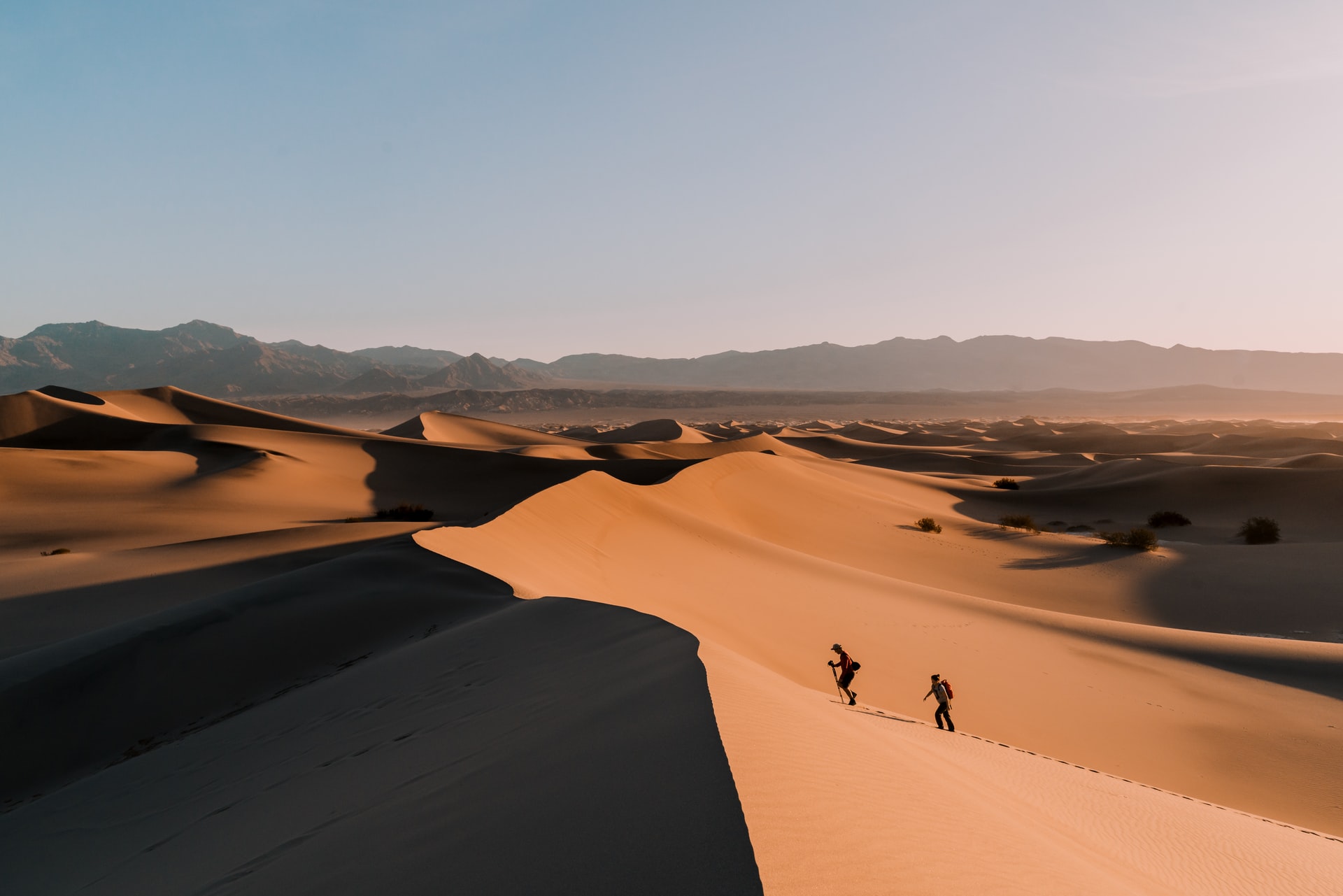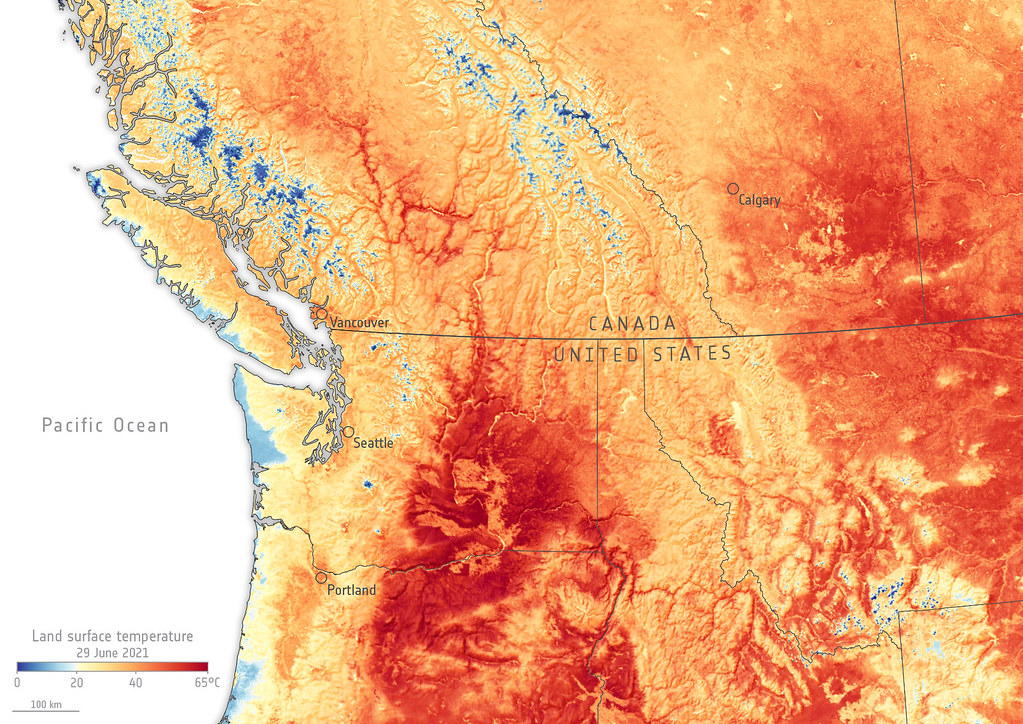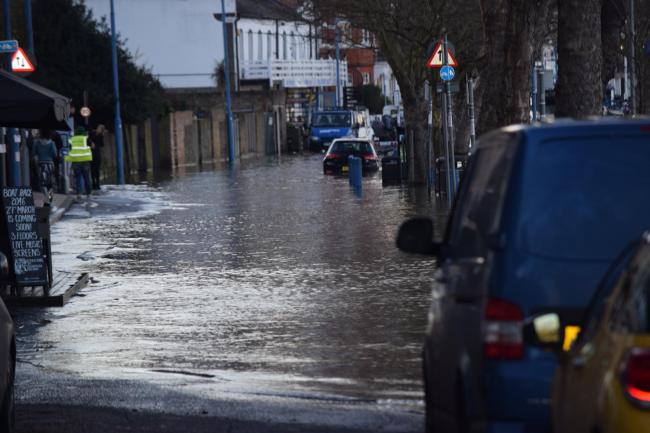Mauricio Rodas: It is in cities where the battle against climate change will be defined
Former Mayor of Quito and Senior Fellow at the Adrienne Arsht-Rockefeller Foundation Resilience Center, Mauricio Rodas explains why action to confront extreme heat is nowhere near where it needs to be.
By Charlotte Owen-Burge | November 11, 2021
The “silent killer” of extreme heat is beginning to roar. Since 1991, 37% of heat-related deaths are estimated to have been caused by the extra warming associated with climate change. In Arizona, alone, heat killed at least 10,000 people between 1999 and 2016 – more than hurricanes, tornadoes or floods in most years. The evidence is clear: the more we use fossil fuels, the more the world will heat up.
The summer of 2021 was record breaking. At a glance — Kevo, in Lapland, recorded heat of 33.6C, the hottest day since 1914 when authorities registered 34.7C. New Zealand experienced its hottest June since records began over one hundred years ago. Death Valley, California set a world record on July 9 for the hottest reliably measured temperature in Earth’s history with a temperature of 54.4C — for the second time.

Death Valley National Park. California and Nevada experienced a devastating heatwave this summer that broke the record for the hottest June ever recorded in the region. Image: Tyler Raye/Unsplash.
“Nowhere is safe,” Sir David King, the UK’s former chief scientific adviser, recently said. As continually rising emissions push global temperatures higher, all societies – from northern Siberia to Australia – are on course for more extreme weather events, that include heatwaves.
Every 0.1C of warming caused by manmade emissions will have impacts on thousands of lives. By 2050, heat waves are expected to affect more than 3.5 billion people globally – 1.6 billion people in urban areas – as they grow in frequency, duration and intensity. If action isn’t taken immediately, many parts of the world will be uninhabitable by the end of the century.
So why has it taken so long for the world to draw a line between extreme heat and the climate emergency? Mauricio Rodas, mayor of Ecuador’s capital, Quito, from 2014-2019, explains why it’s only now that we’re noticing the threat.
“Many people discuss and think about climate change, but very few have focused specifically on extreme heat,” he begins.
According to the former mayor, the reason for this is clear: “Climate-related hazards like hurricanes, floods, typhoons and others are visually shocking, whereas extreme heat is not. You don’t have this shocking image of people dying because of heat.”

Canada–US heatwave. Image: European Space Agency
But it is not just a “silent killer” because of “how many people die every day without us even noticing it,” says Rodas. “It is also a silent killer because we don’t have data. We don’t know how many people die from heat. We don’t know how many people are ill-affected because of it. And we don’t know much about the effectiveness of policies that are being implemented to address it, because they have not been measured properly.”
The result of this, he says, is that “many mayors, city officials, key stakeholders and people in general, are not taking this issue as seriously as they should.”
It’s actually very difficult to pinpoint the effects of heat on the cause of death. People with heart or lung disease are among the most vulnerable to heat, but these pre-existing conditions also make it difficult to separate the influence of heat from their cause of death. As a result, many cases of heat-related death go unreported.
Rodas coordinates the Adrienne Arsht-Rockefeller Foundation Resilience Center’s Extreme Heat Resilience Alliance (EHRA) which is addressing the short and long-term shocks and stresses from extreme heat, with a focus on vulnerable communities. Among other things, they do this by educating decision makers and key stakeholders about the risks and impacts of extreme heat, and developing policy recommendations to reduce heat risks.
Another strategy they’re working on is naming heat waves. Rodas believes this would help give heat waves “a dimension, making them more understable.” It would also, he says, “make them more trackable and comparable, determining the perverse outcome of one heatwave versus another.”
Despite “record highs” being announced every year, action is nowhere near where it needs to be. The reason behind this, according to Rodas, is two-fold: financing and how the narrative is framed.
“If you look at the latest international agendas, the [Sustainable Development Goals], the Paris Agreement, the New Urban Agenda, the Sendai Framework, the Global Compacts on Migration and Refugees, among others, all of them in practice bestow cities with new and important responsibilities that they didn’t have before.”
“In the past, city officials were supposed to fix potholes, provide water, electricity, public transport, in some cases education or health. Now on top of that, they need to fight climate change, build resilience; protect urban citizens from extreme heat, and deliver services and infrastructure for a growing immigrant population. They also need to cope with pandemics because cities have been at the forefront of dealing, for example, with COVID-19. Cities are addressing some of the world’s most pressing issues. Unfortunately, most cities lack direct access to the financial resources needed to undertake these responsibilities in an appropriate way; they have to face an international financial architecture that was designed for countries, not for cities,” says Rodas.
Despite acknowledging that many cities have robust climate action plans, Rodas is concerned “that having those plans, and those ideas, will be fruitless if the international financial system does not provide the necessary resources to develop and implement them.”
“Since it is in cities where more than 70% of CO2 emissions are being generated, it is here where the battle against climate change will be defined,” he argues.
Without an effective role from cities doing what they need to do to tackle climate change Rodas believes it “would be impossible for countries to meet their NDCs, or to meet the Paris Agreement.” But for cities to do that, he explains: “They need money. They need to transform their infrastructure. It is expected that between $3-4 trillion per year is needed to transform urban infrastructure to make it climate friendly.”
The question, says Rodas is “how are cities able to get the money navigating through an international financial system that is not cities friendly? For me, that’s the key point. That’s where we should be paying attention.”
So why is adaptation and resilience building so hard to fund, I ask. The reality, according to Rodas, is that “mitigation projects are much more politically sexy than the adaptation ones.”
“How can we make mayors willing to undertake adaptation projects if they have so little finance to work with? How can we make them decide, that of all the lobbies, they will go for an adaptation project?”
Rodas believes we need to be smarter in the way we communicate the importance of adaptation projects. “If mayors do not undertake an urgent adaptation projects and a climate event occurs and people get killed, it will be politically devastating for them.”
To overcome this, he believes we need to have financial facilities directly focused on adaptation projects. He acknowledges that some efforts have already been made in that regard, with multilateral banks and international cooperation agencies stepping in, but says it is still nowhere near enough.
The other thing that needs to change, according to Rodas, is the narrative. “This is not about climate change, it is not about NDCs, it is not about 1.5 degrees. It is about improving people’s lives. The more we experience climate change effects like heat, hurricanes, flooding and forest fires, we threaten not only people’s lives, but also the quality of living.”

Putney, London 2021. Floods in cities will become more common.
“As a mayor, you have a duty to protect and improve people’s lives. If you want to address those key priorities, you definitely have to embark on a climate agenda. Because the climate agenda at the end of the day is about improving people’s lives.”
Rodas uses the example of the metro that was built in Quito while he was mayor, “the first metro line in the city and in the country, and the largest infrastructure project in the history of the city.”
“For me it was about climate but for most of the people probably it wasn’t, it was about improving the public transportation system. It was about improving their lives. It was about saving them time. It was about giving them a sense of pride, because they have in their city this top-quality mobility system that they didn’t have before. It was about many other things besides climate, and that is perfectly fine.”
In addition to plugging the funding gap, creating a new narrative, for Rodas, is at the heart of the solution. “How do we make sure that mayors understand that at the end of the day a climate-related project, or a extreme heat-related project for that matter, is not only about heat or climate. It is about protecting and improving people’s lives, and I hope mayors can see this as a political opportunity to engage themselves in this cause.”
Reflecting on the task ahead and the road to COP26, he says: “I don’t think we should keep wasting time on this. People are dying because of extreme heat. We need to do something extremely disruptive and bold about this. Right now.”
With rising temperatures – particularly in cities – inflicting negative health and economic impacts across the globe, the Adrienne Arsht-Rockefeller Foundation Resilience Center formed the Extreme Heat Resilience Alliance to protect people from extreme heat.
Urban populations are particularly threatened by heat. This is why EHRA recently created the City Champions for Heat Action (CCHA) initiative. CCHA has Athens, Miami-Dade County, and Freetown as its founding cities, and it aims at sharing best practices, developing metrics, and mobilizing partners to tackle extreme heat in cities to save thousands of lives.
The US launch of its #HeatSeason campaign took place on April 30. Major US cities like Houston, Atlanta, Sant Antonio, Austin and others have already accepted to join the #HeatSeason campaign and disseminate communication tools to raise awareness about heat-related risks. This is a global effort that will keep expanding with similar events in the Southern hemisphere as their heat season approaches. The objective is to engage as many cities as possible worldwide to implement heat-related policies and actions to protect their populations. For more information, please click here.
For more information about the Race to Resilience campaign, please click here.




